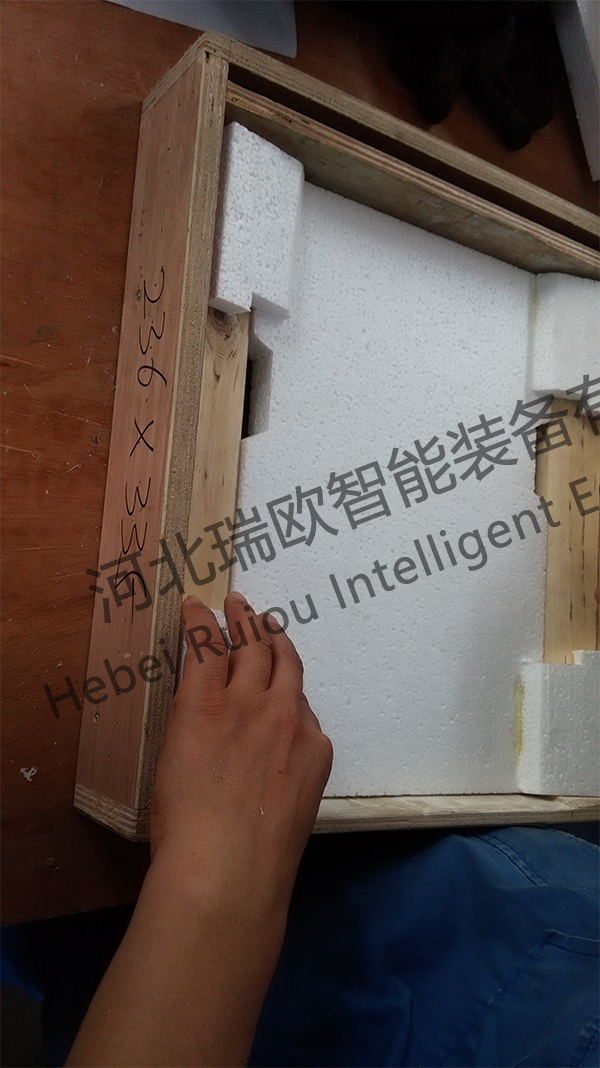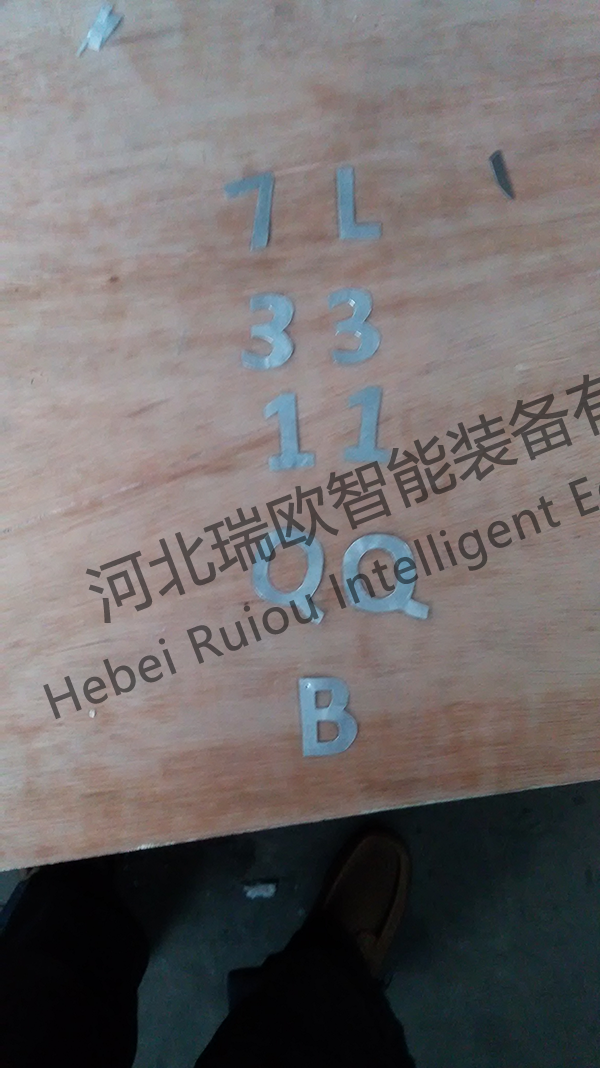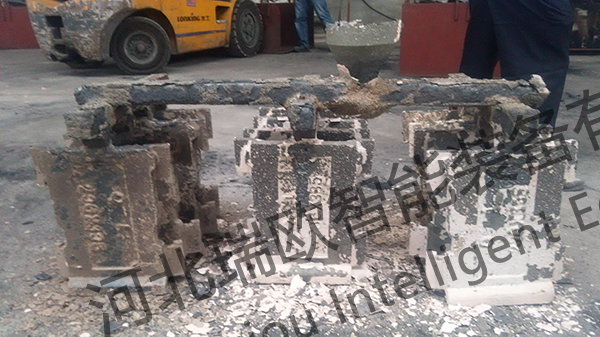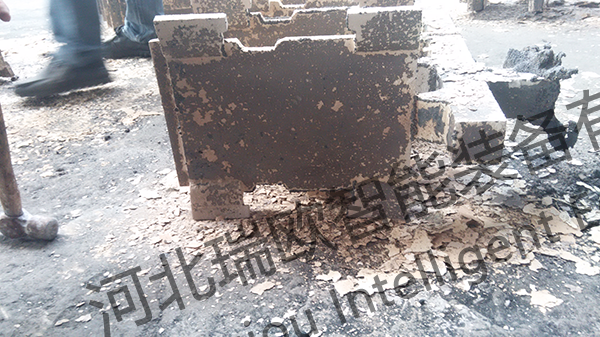Lost Foam Casting Process of Hanging Pieces for Vertical Drying Kiln
Release time:
2022-08-03 18:13
Source:
1. The process parameters of the hanging film.
Casting profile size: 236X335mm
The thinnest wall thickness: 30mm
Material: ZG35Cr24Ni7Mn2N
Chemical composition:

Heat-resistant temperature: 800~950 ℃
Casting weight 16kg
2. Process characteristics
The working environment requires heat-resistant, non-machined castings. The structure of the casting belongs to the flat casting. The casting shall be free of sand inclusion, slag inclusion, shrinkage cavity, air hole and other defects.
3. Principles of lost foam casting process design
Manufacturing Process of 3.1 Foam Model
For castings that need to be cut and bonded, reasonable tooling for cutting and bonding is generally formulated to improve production efficiency and accurately locate the structural size of castings. Due to the small production batch of hanging plate castings, they are formed by cutting and bonding white molds. The company's technicians have made tooling for cutting and bonding white molds on site, including cutting aluminum templates for the main body of castings, bonding and positioning templates for castings, and cutting templates for digital letters on castings. as shown in Figure 1.



Fig. 1 Tooling for white die cutting and bonding
Design Process of 3.2 Gating System
The structure of the casting is relatively simple, the overall structure is not complex belong to flat castings, such castings are easy to achieve a box of multiple pieces, so try to increase the casting process yield, rational use of sand box. According to the structure of the casting, the size of the sand box, the size of the melting furnace and the ladle, the top injection type of the casting overpass is determined. The model cluster adopts a box of 12 pieces, the size of the cross runner is 40X40mm, the size of the straight runner is 40X40mm, and the size of the inner runner is 40X40 to 40X20mm. The casting gating system is shown in Figure 2.

Figure 2
4. Coating and drying process
The lost foam coating must have good strength, air permeability, suspension, flow, coating and hanging adhesion and other properties. In this case, the high-quality paint produced by Hebei ruiou intelligent equipment co., ltd. is used to mix the paint in strict accordance with the paint formula. the paint mixer rotates at a high speed of 1000-1200 r/min minutes, stirs for one hour, the paint mixer rotates at a low speed of 500-600 r/min minutes, stirs for 30 minutes to eliminate bubbles, baomile degree of 48-50 degrees, no bubbles are generated in the paint, the number of coating is 3 times, and the coating thickness of coating is about 1.5mm. The drying time is controlled to be more than 15 hours, the temperature of the drying room is kept at a constant temperature of 45 ℃, the fan is agitated, the drying mold frame should rotate regularly to prevent the model from deforming, and the drying curve should be drawn during the drying process. Check the coating before burying the box. The coating shall be dry, free of cracks and white exposure.
5. Sand filling box
Use 30-40-mesh jewel sand, with a bottom sand thickness of 150mm, and place a foam model after hanging flat and vibrating. First, use cloth bag and sand to fix the foam model, then add sand to just bury the upper end of the runner, and carry out the first vibration. The vibration is to go deep into the molding sand by hand to assist the vibration. The vibration mode and time are controlled by the vibration control cabinet of Ruiou Company. After the first vibration, add sand to the upper plane of the pouring cup for the second vibration compaction.
5. Pouring molten iron
The pouring temperature is 1520 ℃ ~ 1550 ℃, and the negative pressure degree is-0.05MP. After pouring, the pressure is maintained at a negative pressure of-0.025MP for 30 minutes.
6. Analysis of the causes of defects in the early stage of casting production and improvement measures
According to the defects of the trial-produced castings, a detailed analysis and research were carried out to find out the causes of the defects and put forward targeted process improvement measures.
6.1 sand
Because the pouring cup of the casting is made of resin sand, the workers did not hold the pouring cup firmly during operation, and the buoyancy of molten iron caused the pouring cup to shift and even float away directly, resulting in a large amount of sand entering the casting, resulting in sand inclusion defects and scrapping. as shown in Figure 3. After that, the foam gate cup was adopted, and the sprue was directly connected with the gate cup, which effectively avoided the sand inclusion defect. However, in this way, attention should be paid to the thicker coating at the gate cup and the runner. During pouring, do not let the molten metal directly wash the side wall of the gate cup, otherwise the casting will be scrapped due to insufficient strength of the white mold gate cup.

Fig. 3 Sand inclusion defect
6.2 stomata
After the casting is cut from the middle position, it is found that there are a lot of air holes, as shown in Figure 4. The reason for the analysis is that the on-site equipment maintenance personnel did not use the negative pressure system according to the instructions for use, the water level in the negative pressure tank was not enough during pouring, and the negative pressure fluctuated greatly. During the pouring process, the gas in the casting was not completely pumped away and remained inside the casting, resulting in porosity defects in the casting. In the following production, the water level in the negative pressure tank will be increased enough, and such problems will not occur again.
From this point, it is concluded that the casting production process is interlocked, the data in the production process are truthfully recorded, the parameters of each link should be guaranteed, and the conditions that should be met should be met, so as to provide the basis for the solution of the casting defect problem.

Fig. 4 Porosity Defect
7. Sand drop cleaning of qualified castings

It can be seen that the shedding of the coating is very good, the surface of the casting is smooth, which fully meets the requirements of casting production and produces qualified castings.
8. Summary
Through the analysis of casting process and defects of heat-resistant hanging plate castings, the following understanding is obtained:
(1): The importance of white mold cutting and bonding tooling is necessary to obtain a white mold model with correct structure and size, which can reduce the difficulty of operation and improve work efficiency.
(2) In casting production, control every link so that every link is safe and in place.
(3) The control and recording of parameters in the casting process is very important for the analysis of casting problems afterwards. In this case, the negative pressure of the pouring in the pouring process is seriously unstable, resulting in casting porosity defects. Recording the data of this pouring process is necessary for accurate analysis of the causes of defects.
Related News










